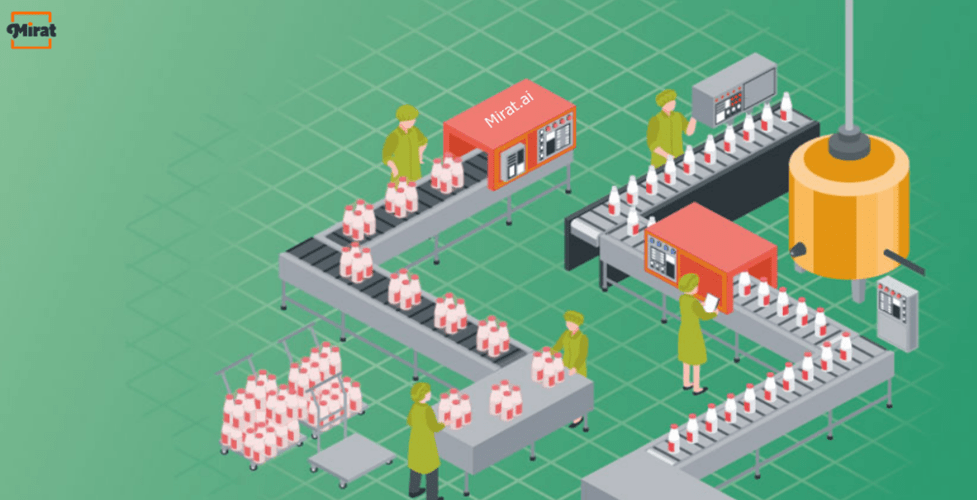Food manufacturers operate in a highly competitive industry with low margins that vary based on the completed products produced, the ingredients, and supplies employed, and the market opportunity. A food service industry’s profit margins are influenced by many things.
Equipment, Inventory, and Facilities
When talking to AM in the beverage industry, they frequently mention two very significant assets.
The first one is the inventory. Every level and type of inventory has a set of expiration dates, ranging from prices and perishable raw materials to value-added finished goods. In such cases, one should imply the margin management process which is the supply chain, production, distribution, and procurement planning. The second factor is their infrastructure and equipment. AM in the food industry is time-consuming and costly. While going from aisle to aisle in a supermarket the consumers may inquire or complain about food being so expensive. The question changes once they are given a tour of the food service industry. Seeing the efficient infrastructure they ask ‘how come food doesn’t cost more?’.
The food service industry is massive, with intricate operations that require high-maintenance, sophisticated machinery and technology that often cost millions of dollars per annum.
Imagine what would happen if even the tiniest of efficiency errors creeps up, either in machinery or maintenance!
-
Production comes to a halt.
-
Lack of products to sell
-
Supply and demand chain is disturbed
To secure profit margins plus provide better customer service, it’s critical to properly manage the entire facility and all components within it.
Plant maintenance, especially in a food processing industry, involves intricate details above the production lines. Food production units have humidity ranges which means the presence of bacteria. Other pollutants along with bacteria accumulate on almost everything and everyone, putting food safety at risk.
Measures That Prevent Disturbance of Food Productivity
To maintain the integrity of ingredients, the packaging materials, finished & packed goods, food processing industry, and the staff at all levels must adhere to tight specifications. This includes keeping the premises as well as operating materials clean premises apart from the routine checks. Apart from the operating equipment items such as fire extinguishers and other precautionary supplies should be in check.
It is known that the warehouse and real plant floorings are warm holes for bacterial growth. It cannot be imagined that the tiniest crack, chip or scratch, or crack can serve as an excellent breeding ground for bacteria which can result in contaminated food and loss amounting to millions. that can contaminate food.
Asset Management That Works:
What Are The Priorities Of A Food And Beverage Company?
- Proper maintenance of facilities is properly maintained to ensure
- Excellent food safety,
- Adequate efficient production
- The critical flow of supply chain elements
- Exceptional customer service.
The landscape of the entire facility, the whole triage- mechanical, physical, and human elements, must be coordinated, managed, and monitored. Manufacturers can accomplish the upkeep of physical assets more successfully with an effective Enterprise Asset Management (EAM) strategy and sophisticated technology.
What Does Asset Management In A Food Enterprise Comprise Of?
No guesses here but in the food and beverage industry, every aspect can be governed by AM in the food industry. Right from designing the building to commissioning it, maintaining, operating, replacements of plant parts, cleaning the equipment and facility, everything falls under asset management. Efficient use of these measures guarantees reduced costs and optimize AM in the beverage industry.
With a thorough analysis of labor, material, and contractor charges, an Enterprise Asset Management flowchart allows microscopic visibility into asset-related costs and projects. Inventory management strikes the perfect mix between having enough spare parts ready and reducing further inventory investment.
What’s more. To attain seamless functioning of all assets and their functions, all areas of the facility (from physical buildings to the machinery) are managed and maintained, and synchronized.
Benefits and Value
Food makers rely on profits to stay in business. Profits rise as costs are reduced. The benefits that a good Asset Management system may provide to food businesses are enormous.
- Expenses for maintenance are reduced.
- Increased Yield of Production
- Maintenance Downtime is Reduced
- Scrap and rework are reduced
- Annual Purchases are Reduced
- Increased Labour Productivity
- Increased Equipment Lifespan
Be it any enterprise, the bottom remains the same for all- Workable costs but optimum and high-quality product delivery. To become nimble and productive the two main target areas of the food and beverage industry. MIRAT offers customized solutions based on the needs of the enterprise in question. If the industries we choose to want flexibility, we offer affordability as a plus one.
Mirat.ai’s IT Asset Management is Affordable & Easy to use! Get your Dashboard ready in only 5 Minutes. Request for Trial/Demo now (or) Contact our Team Now.
Contact Information:
Hema
Sales Executive
Phone: +1-315-636-4213
Email: sales@mirat.ai
Website: https://www.mirat.ai/


